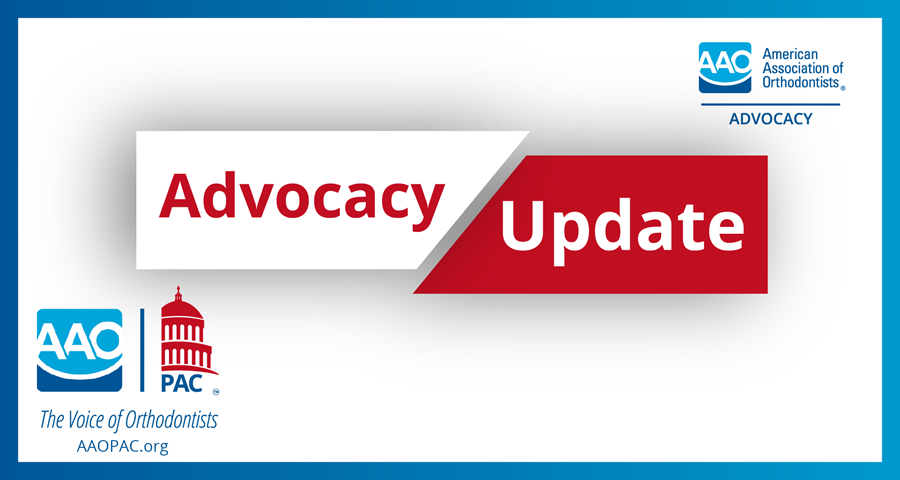A U.S. government mandate for universal Electronic Health Record (EHR) implementation by 2015 will require that all of a patient’s medical and dental records be available in an electronic format if the provider is a participant in a Medicare or Medicaid incentive program. Eventually, the EHR mandate may be extended to all providers.
Learn More about the Medicare and Medicaid Incentive Programs
(The Medicaid incentive program requires a dentist or a dental specialist to have a minimum 30 percent patient volume devoted to Medicaid enrolled individuals over a 90 day span.)
The EHR mandate may not be of immediate concern to most orthodontists, but some may have other reasons for interest in EHRs, such as:
– Plans to transition their offices to paperless status;
– Desire to purchase new software that meets EHR criteria to help ease future transitions if the EHR mandate is eventually extended to all providers.
All providers authorized by a patient will have access to his or her records.
“The health information will actually belong to the patient, however – not to the doctor or the software vendor,” says Dr. Carla Evans, chair of the Department of Orthodontics at the University of Illinois at Chicago College of Dentistry. “This change will benefit doctors indirectly, but its primary purpose is to benefit the patient. The patient will have ease of access to his or her records, reflecting the patient-centered future of health care. For example, medication prescriptions are largely handled electronically already and in the future public health notifications, cancer and syndrome surveillance and other processes will also be electronic.”
AAO committees, task forces and representatives have spent several years ensuring that all aspects of orthodontic diagnosis and treatment as well as appliances and products used in treatment will be referenced correctly in EHR terminology and coding.
The American Dental Association is leading the process of establishing how all dental patient data will be transferred via EHRs. AAO representatives have worked with the ADA Standards Committee on Dental Informatics (SCDI), which is coordinating development of EHR standards for dentistry and dental specialties.
A key representative of the orthodontic specialty in this process is SCDI Orthodontic Working Group (11.6), which is charged with integrating orthodontic standards and orthodontic components of the electronic health record. The Orthodontic Working Group, which reports to the ADA SCDI, includes among its membership orthodontists and representatives of software manufacturers.
Dr. Evans is the co-chair of Orthodontic Working Group 11.6.
“The ADA SCDI exists to develop basic formats and conventions related to definitions, coding and implementation,” says Dr. Evans. “Standardization of electronic record elements will make it possible for software manufacturers to produce systems that can make data from a patient’s file interoperable and transportable, so that doctors have faster, easier access to needed information about patients.”
Bringing Orthodontic Concepts into the System
Dr. Rodney Dubois, a craniofacial orthodontist at Seattle Children’s Hospital, served as the AAO’s representative to the ADA task force that developed dental diagnostic language for use in software. The ADA task force was formed to update SNODENT (Systematic Nomenclature for Dental Informatics). The task force is inclusive, with representatives of all dental specialties participating in its work. SNODENT is a subset of SNOMED, a vocabulary designed to be used in an electronic environment such as EHRs. SNODENT will be dentistry’s vocabulary for the EHR.
Learn More about SNODENT Via the ADA
Dr. Dubois chaired an AAO SNODENT task force that created 199 clinical findings, including two tooth-numbering systems, for orthodontics. The task force also created 99 X-ray and cephalometric landmarks, angles and planes. Each of the 308 concepts was given a ‘parent’ in the Systematized Nomenclature of Medicine (SNOMED) so that the terms may be mapped within SNOMED and then to ICD-10 and CDT 2014, the coding structures that will be used with EHRs.
“While using an electronic health record, an orthodontist should be able to describe any condition seen and have the EHR recognize the conditions,” says Dr. Dubois. “That would require SNODENT to contain a comprehensive list of orthodontic concepts. A ‘use case’ scenario was our starting point, with the initial use case, ‘New Patient Exam,’ being reduced to its essential elements beginning when a patient calls to make an appointment. All aspects of orthodontic practice were covered, with use cases ranging from a patient transferring from another practice, to an existing patient presenting with a broken bracket, included.
“In addition, since the AAO’s Clinical Practice Guidelines include diagnostic records as a necessary component of diagnosis, cephalometric landmarks, angles and planes were included,” adds Dr. Dubois. “The emphasis was on orthodontic concepts because dental and medical concepts would be updated in SNODENT by the editorial panel and other dental groups.”
“A physician submitting a claim for payment for treatment has to indicate what the diagnosis is,” says Dr. Evans. “When filing dental claims we simply request payment for treatment, but we will now have standardized diagnostic terminology via the nomenclature system and will be required to list a diagnosis when requesting payment.”
SNODENT terminology has been included in SNOMED (the medical language) and is now being reviewed by the International Healthy Terminology Standards Development Organisation (HTSDO) via the U.S. National Library of Medicine.
“The National Library of Medicine, the central coordinating body for clinical terminology standards within the Department of Health and Human Services (HHS), promotes international effort to standardize terminology worldwide, which will support interoperability (computer systems’ ability to exchange data and present data so that it can be understood by all users),” says Dr. Evans.
Beyond Terminology and Concepts: Electronic Transmissions
SCDI Working Group 10.9, Dissemination of Dental Laboratory Prescriptions, is chaired by dental lab technician Jim McLees, CDT.
Assisting Mr. McLees with the development of the electronic orthodontic laboratory work order have been Dr. Dubois, Dr. Evans and Dr. Kirt Simmons. Their task is to replace paper lab slips with interoperable and transportable electronic laboratory prescriptions.
Dr. Simmons provides all orthodontic services for the Craniofacial Deformities and Cleft Lip and Palate Teams at Arkansas Children’s Hospital.
Dr. Simmons also co-chairs the IHE Dental Domain, a working group of the ADA-SCDI that is working with Integrating the Healthcare Enterprise (IHE). IHE is an association of healthcare professionals and industry representatives working to ease adoption of digital health care information systems.
“We are responding to ADA members who have told us, ‘I can’t exchange my dental images with the specialist down the street because we have different software and computer systems,” Dr. Simmons told the ADA News (May 21, 2012). “This partnership is working on solutions that will help dentists to select interoperable systems allowing for the secure and private exchange of images while maintaining HIPAA compliance.”
A primary task of the IHE Dental Domain is working with the IHE on “Connectathons,” which are weeklong events during which information systems suppliers and users test digital systems’ interoperability (computer systems’ ability to exchange data and present data so that it can be understood by all users).
Documentation for Third-Party Payers
The AAO Electronic Health Records Attachment Committee* is providing technical and expert representation on behalf of the AAO for all issues related to orthodontic attachments in EHRs in order to ensure that standard EHR claim forms will populate correctly. Potential attachment items requested by payers could include radiographs, photographs and measurements as well as digital models and 3D face scans.
“We are feeding information into the ADA SCDI Working Group 10, which is standardizing attachments for all of dentistry in cooperation with the National Institute of Standards and Technology (INIST), an agency of the U.S. Department of Commerce,” says Dr. Evans. “In the future, insurance forms will automatically go to the third-party payer with all attachments needed to support the claim. In addition, efficient and secure transmission of the images and measurements is important to expedite referrals and communications with other clinicians.”
Dr. Evans points out that the American Board of Orthodontics already requires candidates for Board certification to provide digital models and digital casts for case submissions in a standard generic format for 3D files. Serving as liaisons between SCDI Working Group 11.6 and the ABO on the subject of transmission of images are Dr. Valmy Kulbersh, a member of the ABO Board of Directors, and Dr. John Grubb, who worked to standardize records requirements for ABO Board certification.
“This change has been applauded outside dentistry because ease of access to the files may be needed in various non-dental situations,” says Dr. Evans. “An example would be when a forensic pathologist may need it to identify someone’s body.”
The new ABO requirements are included in NIST Special Publication 500-290 (2013), Data Format for the Interchange of Fingerprint, Facial & Other Biometric Information.
Some SCDI radiology reports overlap with the DICOM (Digital Imaging and Communications in Medicine) Committee, a part of the ISO [International Standards Organization], which sets global Information-technology standards used in virtually all hospitals worldwide. DICOM conformance ensures every medical imaging facility can work with all current or future imaging modalities and related peripheral equipment – regardless of vendor.
DICOM Working Group 24 presented JPEG XR as the new ISO/IEC standard for DICOM images in December 2011.
“This file format from Microsoft is claimed to provide better compression (more efficient, less artifacts), more image formats and advanced decoding features,” says Dr. Evans. “In the future, it is possible that information systems will be able to use this file format.”
* Members of the AAO Electronic Health Records Attachment Committee include Dr. Carla A. Evans, chair; Dr. Michael G. Durbin; Dr. Kirt E. Simmons and Dr. Norman J. Nagel (Board liaison).
Software Providers Should Be Addressing EHRs
Having gathered needed input from general dentists and dental specialists, the ADA SCDI is now working on the details of standards that will make secure electronic transmission of patient data possible.
The AAO encourages all members in active practice to consult with their practice management software providers during the first half of 2014. If the supplier has not provided information, inquiries about the status of implementation of the technology required for secure electronic transmission should be made. All ADA SCDI standards may not yet be available for incorporation into software, but software developers may purchase standards that are available from the ADA catalog (www.catalog.ADA.org) and from the Accredited Standards Committee (ASC X12), an organization chartered by the American National Standards Institute. The Original Implementation Guide 5010/837D Health Care Claim: Dental is available at http://store.x12.org/store/healthcare-5010-original-guides.
ICD-10, EHRs and the ADA Form Change
In conjunction with the launch of EHRs, ICD-10* coding requirements will go into effect in October 2014. The AAO will soon begin providing available information about ICD-10 via orthodontic staff webinars. The $40 webinar registration fee covers multiple participants from the same office when using a common e-mail address.
Learn More and Register for the Webinar:
ICD-10-CM Coding Essentials for Orthodontics (Evening Webinar)
– Tuesday, January 21, 2014 at 8:15 PM ET (5:15 PM PT) or
– Thursday, January 23, 2014 at 10:00 PM ET (7:00 PM PT)
AAO members should also be aware that in conjunction with the ICD-10 implementation, the ADA is changing its claim form, which currently has only spaces for procedural codes, and is adding spaces for diagnostic codes (similar to medical claim forms. Orthodontic terms related to diagnoses have been assigned codes under ICD-10, as Dr. Evans points out above in the Bringing Orthodontic Concepts into the System section.
* ICD-10 is an internationally accepted coding mechanism for medical/dental diseases and conditions.
E-mailing Patient Information Securely
Dr. Evans recommends that orthodontists who are seeking a secure method of e-mailing patient information investigate the state-run Health Information Exchanges.
“A Health Information Exchange is available in most states and enables any licensed and registered provider to send e-mails and large files securely to another registered health professional, and via links to patients and non-registered providers as well,” she says.
Learn More about the Health Information Exchange
Respond to the AAO Survey on Electronic Records
The AAO asks that members respond to a short survey linked below, which will ask whether your office is currently filing patient claims electronically and whether or not your practice is currently paperless.
Take the EHR Survey
For More Information
AAO members with questions about EHRs may contact Andrew Wiltsch at [email protected].



